What you need to know from LVMH Watch Week
Here are my top 3 takeaways from LVMH's annual watch exposition.
Last week, the world’s largest luxury conglomerate, LVMH, hosted me and a group of watch journalists to their annual exposition known as “LVMH Watch Week”, during which nine of their horological maisons revealed the year’s big new releases.
The show had re-routed from Beverly Hills to New York’s Tiffany & Co. Landmark building, out of respect to those suffering from the Los Angeles fires. And in a commendable feat of swift logistical reconfiguring, the show smoothly went on with presentations from TAG Heuer, Zenith, Hublot, Tiffany, L’Epée, Daniel Roth, Louis Vuitton, Gérald Genta and Bulgari – complete with a schmoozy dinner at the millennial-y members-only club, Casa Cruz, where I rubbed elbows with Jean and Frédéric Arnault and practically every executive from the represented brands.
Here’s what you need to know from the week.
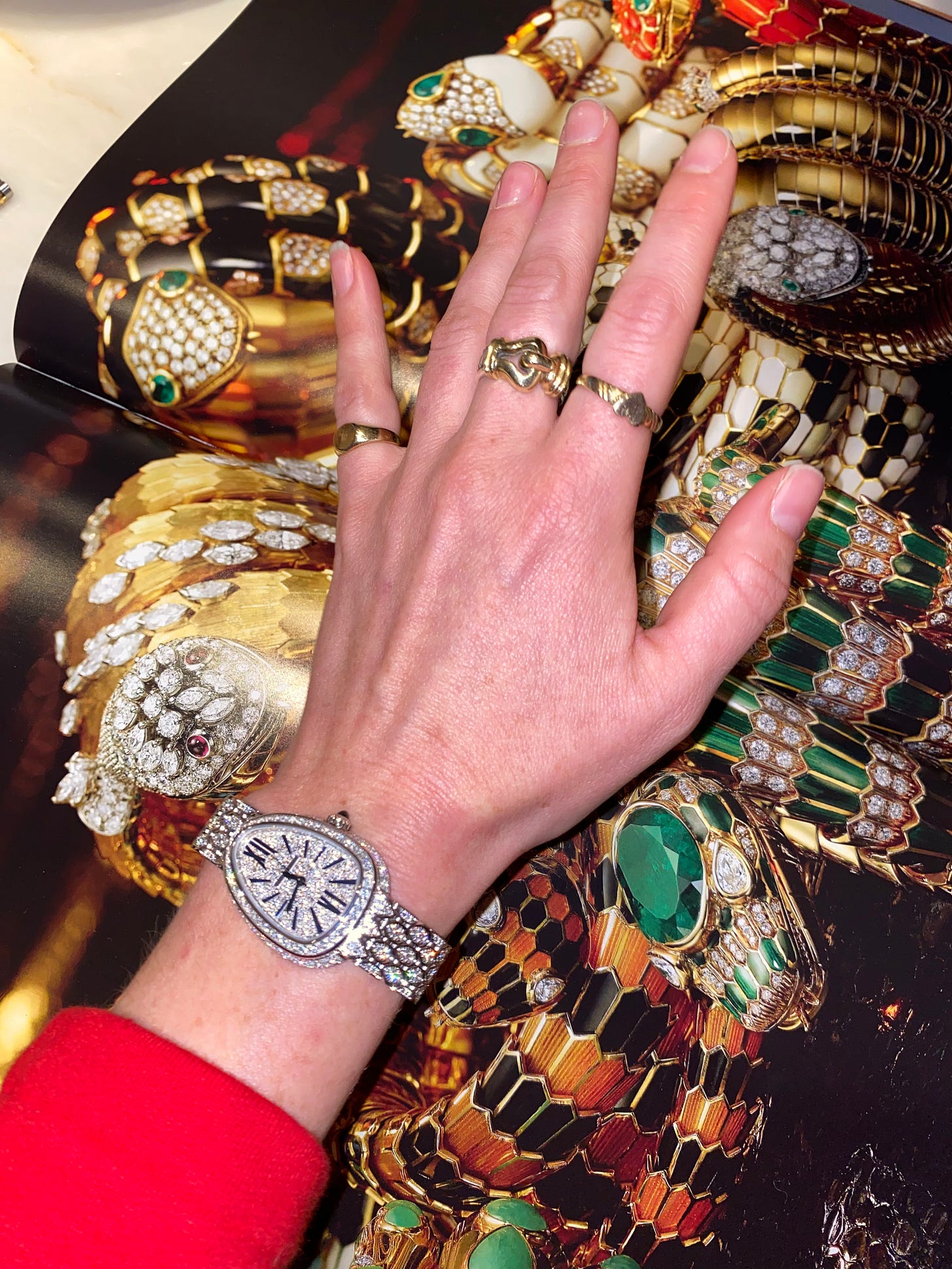
BULGARI IS BETTING BIG ON SMALL MECHANICAL WATCHES FOR WOMEN
Coinciding with the Year of the Snake, Bulgari is leaning into the ssssssymbol they’re ssssssynonymous with – the Ssssssserpenti. In addition to being the Italian maison’s most famous watch, the Serpenti is also one of the most impactful ladies watches of all time, popularized by glamorous women from Elizabeth Taylor to Zendaya. And this year, Bulgari is upping the ante by equipping these iconic watches with mechanical movements.
The meeting with Bulgari was, by far, my most important moment of LVMH Watch Week.
On a luxurious couch inside their 57th street flagship, Bulgari unveiled the “Lady Solotempo” BVS100 automatic movement, premiering in their stripped down Serpenti Seduttori models, alongside a rose gold Tubogas (the very snake-like Serpenti you’re likely more familiar with). With this in-house made movement, the watches have retained their graceful, teeny tiny size, albeit with more technical chops. These watches are more expensive, but the point is that Bulgari created a small movement made for smaller watches, intentionally designed for the modern female watch collector.
That’s one small slither for the Serpenti and one giant leap for womankind, in what is planned to be a greater strategic initiative for all of the watch brands in the LVMH portfolio.
Bulgari will keep producing this movement in-house for the next couple of years (and keep their more famous, proprietary movements, like 2022’s Piccolissimo, to themselves), but the plan is to eventually hand over the Lady Solotempo to Zenith, another LVMH watch brand renowned for its historic movement production.
In the hands of Zenith, the teeny tiny Bulgari movement will be re-engineered for higher volume use in ladies watches within the group. It’s an ambitious decision to prioritize their female consumer, when it feels that many other brands have forgotten about mechanical ladies watches altogether.
“We truly believe in the potential for ladies watches in the future,” said Jean-Christophe Babin, CEO of Bulgari, also noting their heritage of producing mechanical ladies watches since the early 1900s. “It’s in our DNA. Now, we have full-bodied watches again with Swiss craftsmanship inside and out” – the internal mechanics accentuating the aesthetic design of the case, the dial and the bracelet.
“It’s more authentic,” continued Monsieur Babin, “And authenticity today, in troubled times, is, more than ever, essential to success.”
This is not just dreamy CEO talk. To authentically cater to women in this industry is smart business! According to Deloitte x Watch Femme’s spotlight on the female market within their 2024 Swiss Watch Industry Insights report, “women are increasingly purchasing watches for themselves, marking a shift in market dynamics,” but they remain “underrepresented and insufficiently targeted by the industry, meaning there is untapped potential for growth.” Mamma mia.
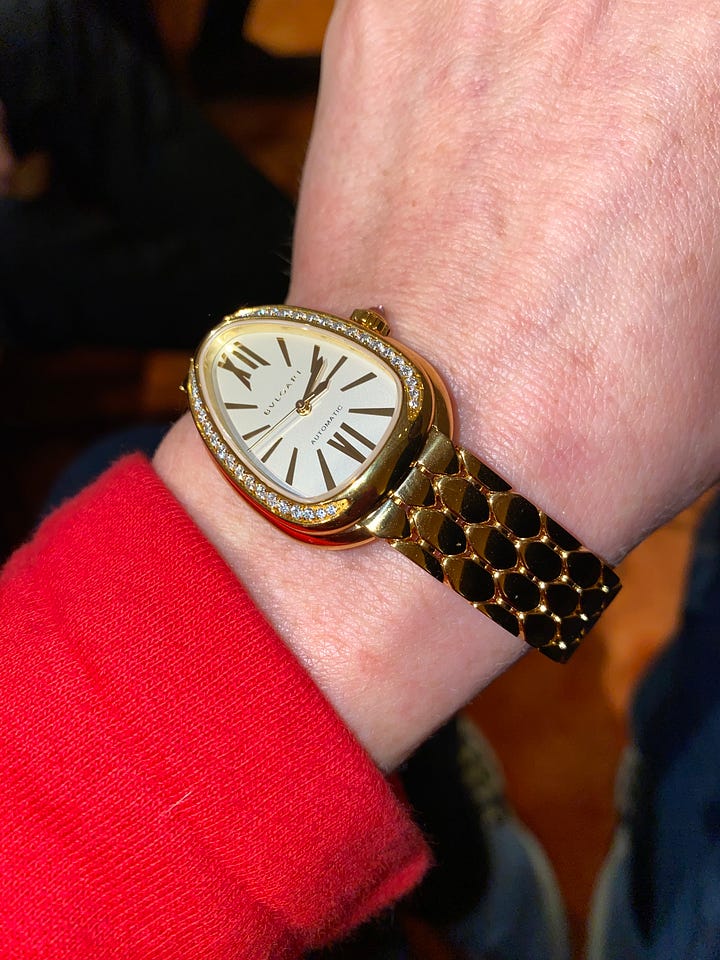
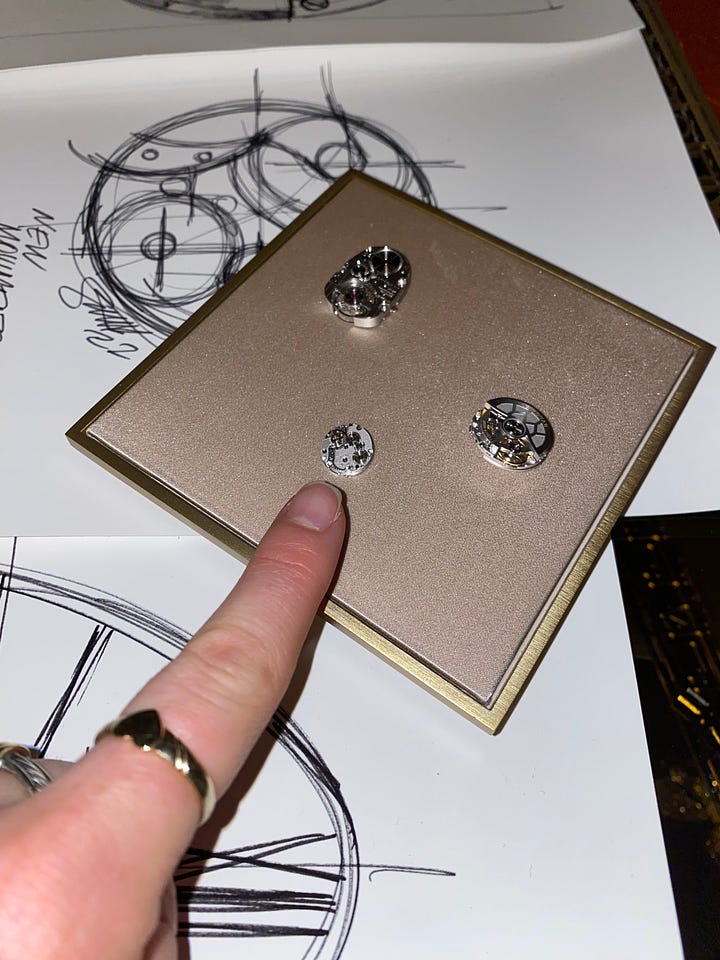
*OPTIONAL, CONTINUED READING* If you’re confused about what exactly a watch movement is and why this is so very important to me, here’s some context:
Bulgari introduced the Serpenti in 1948, sexy and sinuous and ahead of its time. The bracelet part of the watch is crafted using the ingenious, painstaking “Tubogas” technique, in which interlocking strips of metal (like 18K gold) wrap around a wooden core, making for a continuous curving fit once the core is removed. The effect is that of a snake wrapping around one’s wrist, hence “Serpenti.” Its imaginative, jewelry-forward design indefinitely pushed the boundaries of what a woman’s watch could be.
That inaugural Serpenti had a little watch fitted into the snake’s “head” at the top of the bracelet, powered by a tiny mechanical movement – because this was the 1940s, when all watches were mechanical. The cheaper, more efficient quartz battery, which threatened the sheer existence of mechanical watchmaking, hadn’t been invented yet. (Thanks to a number of bold, persistent watchmakers, mechanical timekeeping survived what’s known as the “quartz crisis” in the ‘70s/’80s, and we still have the luxury to enjoy little intricate movements in our timepieces despite the fact that the technology is, on paper, outdated.)
True watch enthusiasts laud mechanical movements because they are the culmination of centuries of technique, engineering and craftsmanship. For some (stereotypically, male watch collectors), it’s cool to think that inside your watch is a tiny machine with gears and balance wheels and springs keeping your watch ticking and, in the case of automatic watches, working in tandem with your body’s kinetic energy. A mechanical movement is romantic, whereas a battery is decidedly not.
Most brands, however, have chosen to insert quartz batteries into their ladies offerings, forgoing mechanical movements altogether. The reasoning is that – and I’m paraphrasing what I’ve heard from watchmakers and consumers alike – women don’t care about mechanical movements. In fact, they’re tiresome. When a lady puts on a watch – say, her Cartier Panthère, which runs on a quartz battery – it’s akin to putting on a bracelet. She doesn’t have to wind it to make it work. She doesn’t have to wear it everyday. It runs on a battery, so it will consistently keep time with no effort and low maintenance. A quartz watch is also cheaper, because popping in a battery requires far less resources than crafting a movement does.
As the rise of the Smartphone rendered the practical necessity for wearing a watch obsolete, brands found little incentive to continue on creating mechanical timepieces that women, in general, didn’t want or need.
And here we are today: most modern ladies watches are quartz.
As I’ve gotten more into the watch world, I’ve learned to gently look down upon quartz movements. My first luxury watch was quartz, and I still love it, but in my heart, I know it’s inferior to my mechanical watches. So, when I see a watch brand proudly unveiling their fancy new ladies release, the fine print reading “quartz powered” makes my heart sink. Brands will credit this decision to the lack of demand, but also to the fact that making a watch movement small enough to fit a smaller sized ladies watch is a more technically laborious feat.
But Bulgari is willing to put in the work, and for this reason, their big announcement around their teeny tiny movement eclipsed all the other releases from the week, while complementing LVMH’s greater effort toward watchmaking...

AGAINST THE ODDS, LVMH IS MAKING WATCHES FOR WATCHMAKING’S SAKE
Although the luxury industry at-large continues to “suffer” post-pandemic due to declining sales in China and broader macroeconomic headwinds, LVMH is weathering the storm, recently reporting a 1% uptick in organic growth despite an overall downturn. “Selective Retailing”, which includes Sephora, was the company’s top-performing division, whereas sales in the watches and jewelry category have slightly declined.
Nevertheless, LVMH is adamantly prioritizing growth for their watch and jewelry maisons, best exemplified by the jaw-dropping Tiffany & Co. Landmark Building renovation and what’s going on under the “La Fabrique du Temps” umbrella. Directed by the genuinely enthusiastic watch lover (and son of Bernard Arnault, the patriarch of the LVMH empire), Jean Arnault, La Fabrique du Temps is making watches for watchmaking’s sake.
La Fabrique du Temps (translation: Time Factory) was founded in 2007 by master watchmakers (and total cuties) Michel Navas and Enrico Barbasini, specializing in complex movements for luxury timepieces. In 2011, LVMH acquired this group of designers, engineers and craftsmen to bulk up Louis Vuitton’s horological offerings, produced in their own state-of-the-art watch manufacture, which opened in 2014 outside of Geneva.
Within LVMH, La Fabrique du Temps also comprises Gérald Genta and Daniel Roth, two eponymous brands originally founded by two of the watch world’s most impactful visionaries (Gérald Genta is famous for, among other achievements, designing the Audemars Piguet Royal Oak, and Daniel Roth is a more “IYKYK” pioneer of independent watchmaking).
La Fabrique du Temps is no Sephora. It’s a mere sliver of the greater LVMH business, and it has therefore emerged as one of the more experimental platforms for creativity within the group.
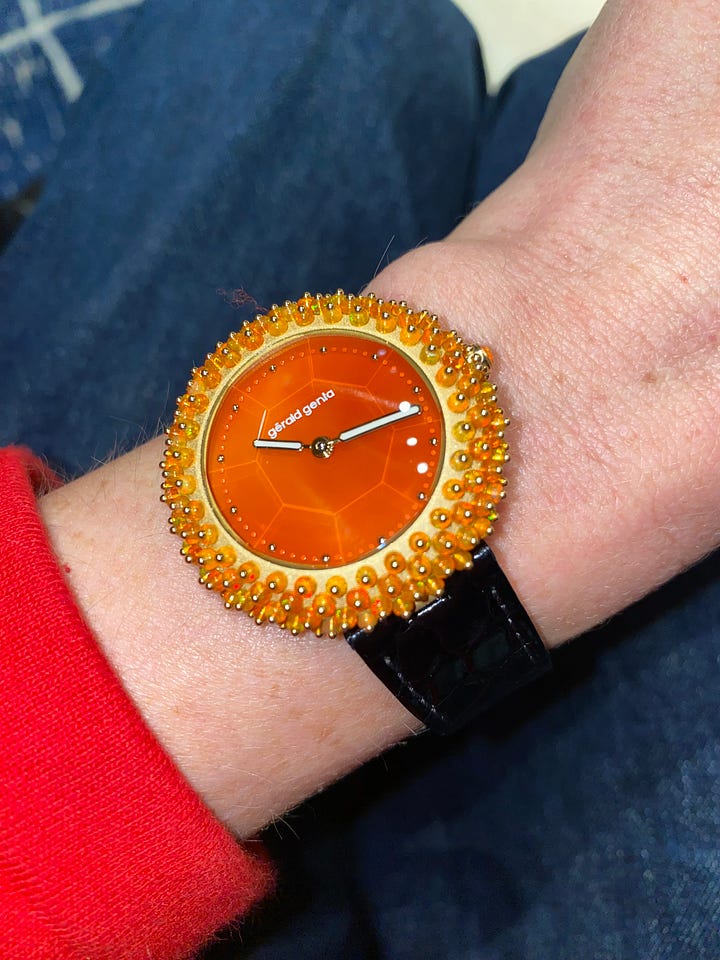
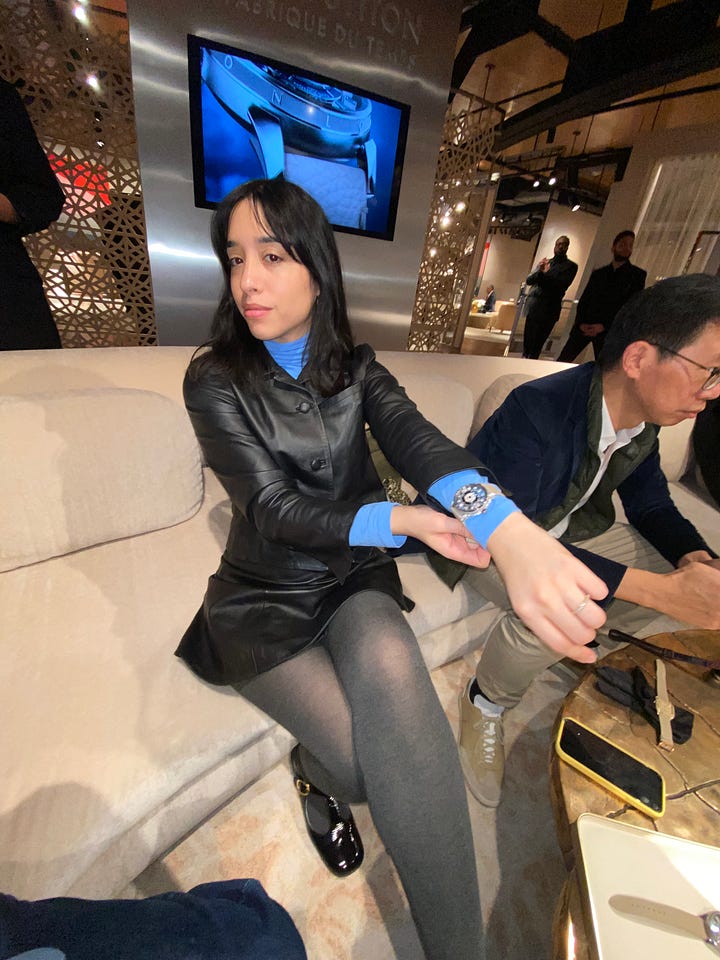
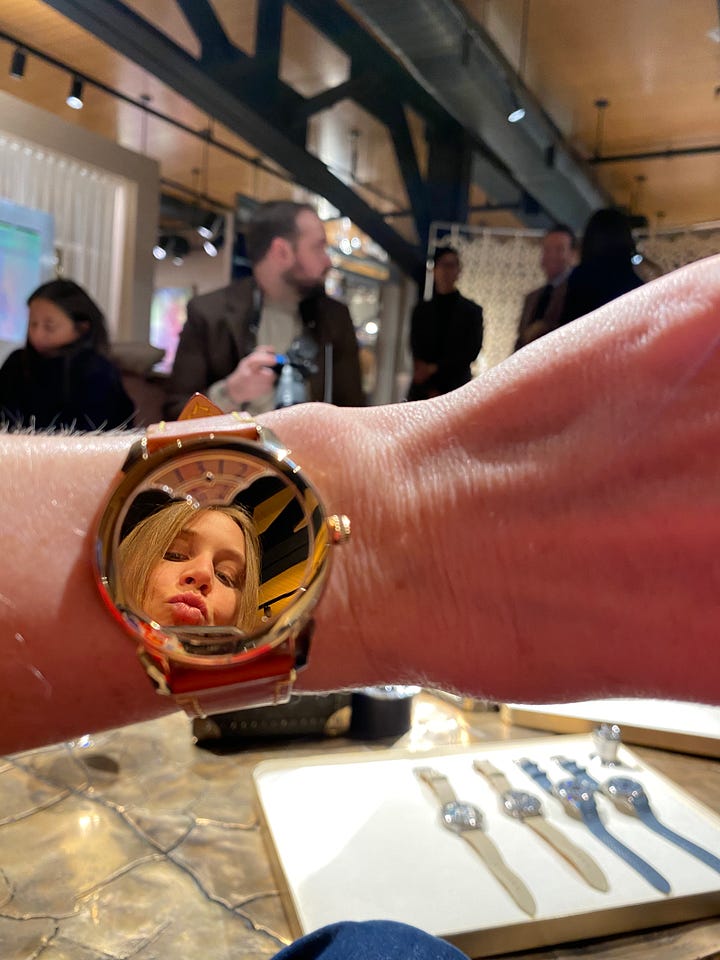
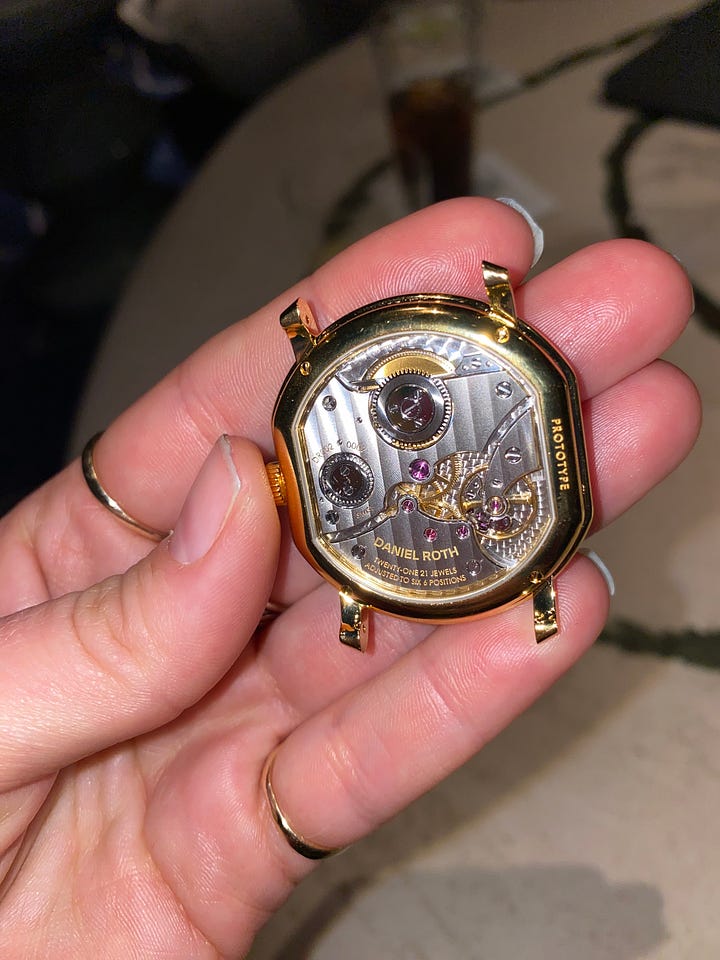
This bold initiative was embodied last week in some insane horological accomplishments, like the Gérald Genta “Gentissima Oursin”, adorned with 137 gold pinned fire opals that elicited the most “oooohs and aaaaahs” out of all the reporters. Then, there are the creations erupting from LV’s Tambour watch line, which has become the go-to canvas for the maison. Both the Tambour Taiko Spin Time collection and the Tambour Convergence sent the watch nerds' heads spinning for various reasons that I shan’t get into because I’m still wrapping my head around the technicality of it all. Just know that this is haute horlogerie at its finest, and it's inspiring to see legends like Navas and Barbasini doing their thing with the full-on support of this monster luxury group.
Although a big part of me yearns for a world in which Louis Vuitton offers more creative, affordably priced options like 1988’s Monterrey, I get what’s going on here. Business is business. According to William Massena, “These days, it’s easier to sell a $100,000 watch than a $1,000 watch.” So, I’ll continue regarding each new release as I would an unattainable work of art.
TIFFANY & CO. IS ONE TO “WATCH”
When it comes to American luxury, few names come close to Tiffany & Co. It’s Audrey Hepburn and a croissant. It’s Trey MacDougal and Charlotte York picking out an engagement ring. It’s a New York institution! (Btw, did you know that the founder Charles Lewis Tiffany invented the phrase “New York Minute” ??)
LVMH acquired the brand in 2021 – waking the ‘sleeping beauty’, in the words of Bernard Arnault, CEO of LVMH – with the massive, showy renovation of their iconic multi-level boutique on 57th (would Holly Golightly even recognize herself in its windows?) and the appointment of Jay-Z and Beyoncé as their flashy, global ambassadors. But quietly rumbling under the surface is an effort – in close step with the overall LVMH initiative – to ramp up its horological offering.
What Tiffany already has going for it is deep, historical ties to the watch world. Of course, we all know Tiffany for its diamonds and jewelry, but the storied New York brand was the first to retail Patek Philippe watches in the United States starting in 1851, which 2021’s 170th anniversary limited-edition Tiffany-stamped Nautilus paid homage to (with much fanfare – the 1st edition of that piece sold for $6.5MM at auction). The impressive Geneva-based manufacturing facility Tiffany opened in the 1840s was actually sold to Patek Philippe a few decades later, further cementing the union between the New York retailer and the greatest watchmaker in the world.
This is not a history lesson, and I’m glossing over many of Tiffany’s proprietary horological achievements, milestones and releases only for the sake of brevity. Just believe that Tiffany & Co. is in the prime position to revisit and revitalize its notable heritage as a watchmaker, which they’ve already started doing under the direction of industry veteran Nicolas Beau, who was appointed vice president of Tiffany Horlogerie in 2021.
When I met with Monsieur Beau in Geneva at last year’s Watches & Wonders, he spoke to me of his ambitions to reignite Tiffany’s watch program, which were tangibly on display at last week’s LVMH Watch Week. All of the new(ish) releases were merchandised alongside the brand’s rather impressive archival pieces (I was obsessed with the pendant watch commissioned to commemorate the opening of the New York City subway system, incorporating a literal sprinkling of dirt from the train’s groundbreaking in 1900).
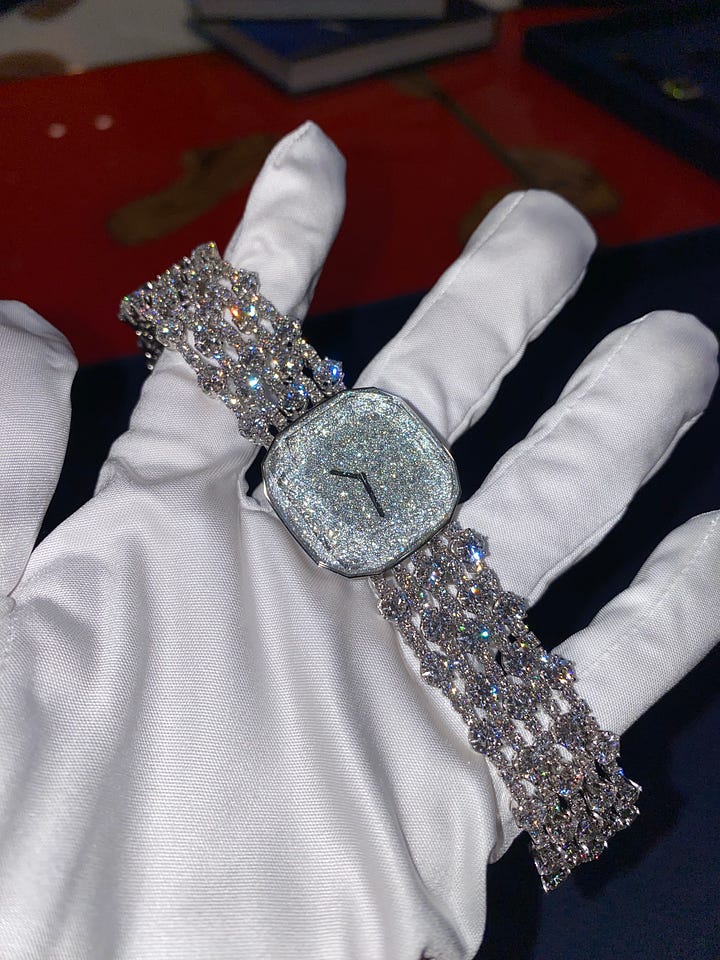
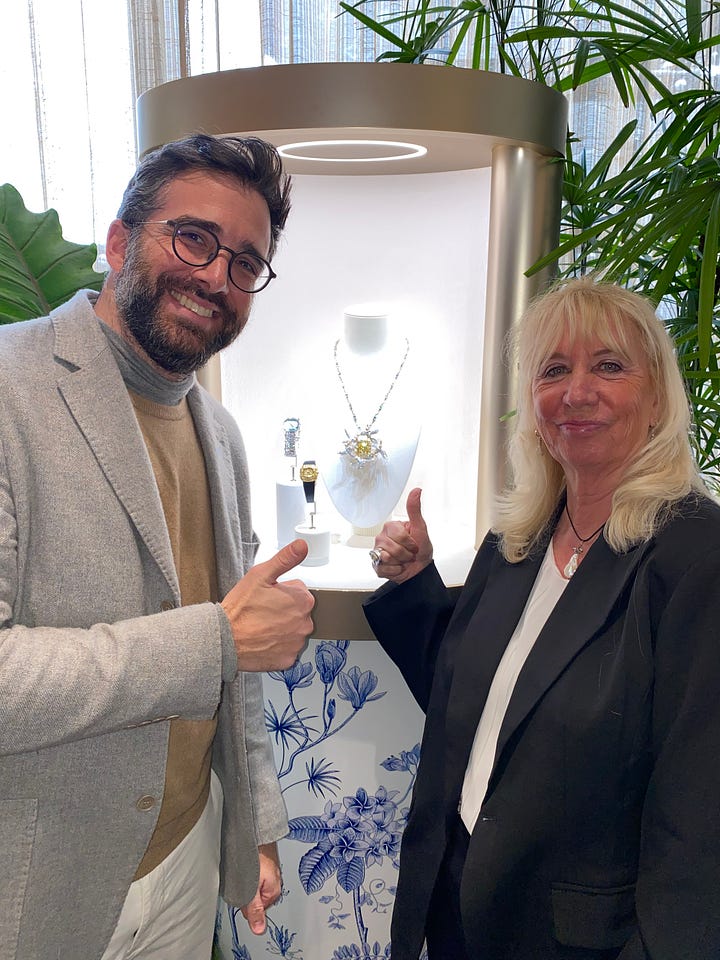
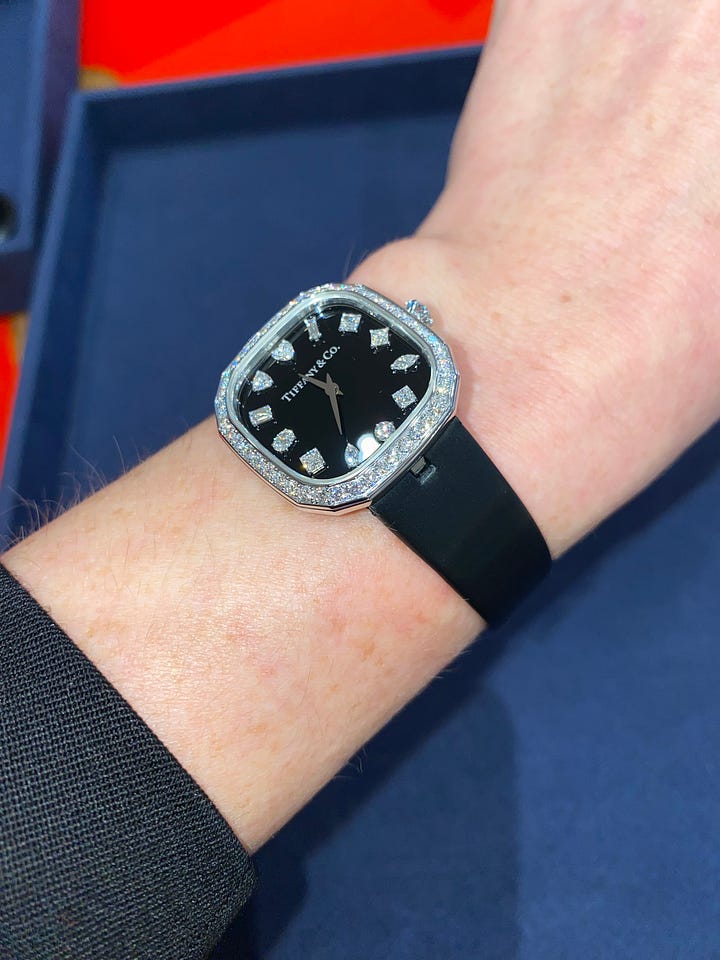
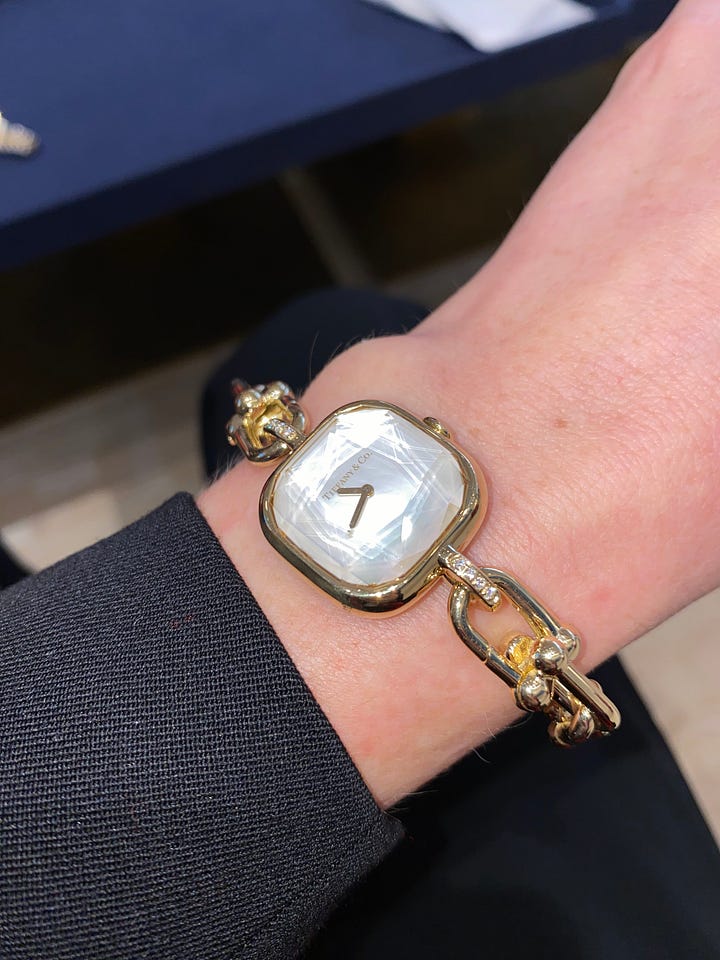
But onto the new new: There were the pieces inspired by the legendary Tiffany designer Jean Schlumberger’s “Bird on the Rock” design, including a flying tourbillon (watch speak for VERY FANCY COMPLICATION) priced at just over $300K. Putting the HAUTE in haute horlogerie.
Then, there was my personal favorite – the Carat 128 Aquamarine High Jewelry watch, whose case shape is a nod to one of the most famous jewels in the world – the Tiffany diamond – which happened to also be in attendance for us to gawk at (!!!). Of this high jewelry watch, featuring a snow-set dial and five-strand bracelet graced with 913 diamonds (nearly 30 karats!) I kept asking, “Who’s going to wear this to the Met Gala?!” They didn’t know yet, but I’ll be watching.
Now, as much as I loved these magnificent pieces, I was most intrigued by their lower-end (but not lesser) offerings, like the $4200 HardWear watch, which debuted in 2023 as the horological complement to the brand’s popular HardWear jewelry line. This, to me, represents a great opportunity for Tiffany to seize, claiming wrist real estate of the girlies looking for a cute, everyday watch that matches their jewelry and doesn’t cost 6 figures.
It’s unlikely that this is going to be the focus – if you’ve learned anything in this newsletter, it’s that LVMH is going BIG, which is supposedly better for business. But I can’t help but fawn over a watch that I, personally, can afford. We’re all in desperate need of a viable alternative to the chic, relatively affordable category monopolized by Cartier.
There’s another exciting Tiffany watch release on the horizon, but it’s under strict embargo until the spring. It’s not $5K, but it’s built for everyday wear on behalf of women, but also someone like Dwyane Wade, who reframed how an elegant dress watch can be worn when he sported Tiffany’s 28mm Eternity watch last fall…
Let’s all WATCH THIS SPACE, and ciao for now!






Love this...as a former Vuitton employee who was with the brand when they first launched watches (Tambours in the early aughts), I had to learn (and then train my team) on the already vast network of the LVMH watch brands/movements, etc. Excited to see what comes for Tiffany.